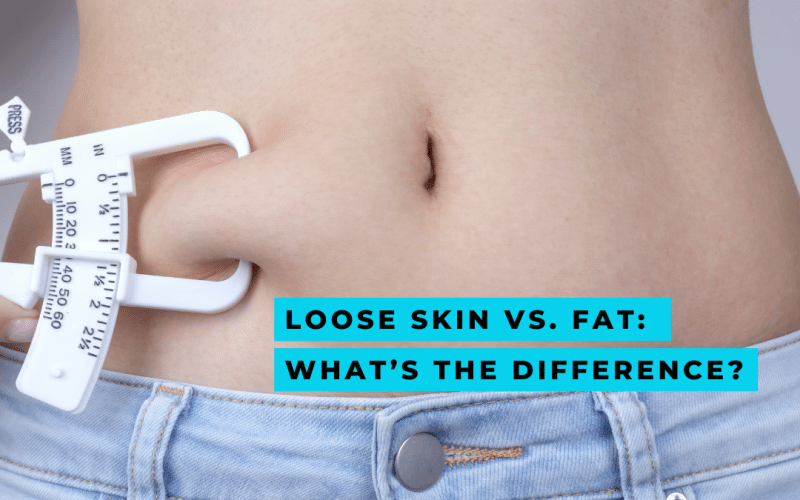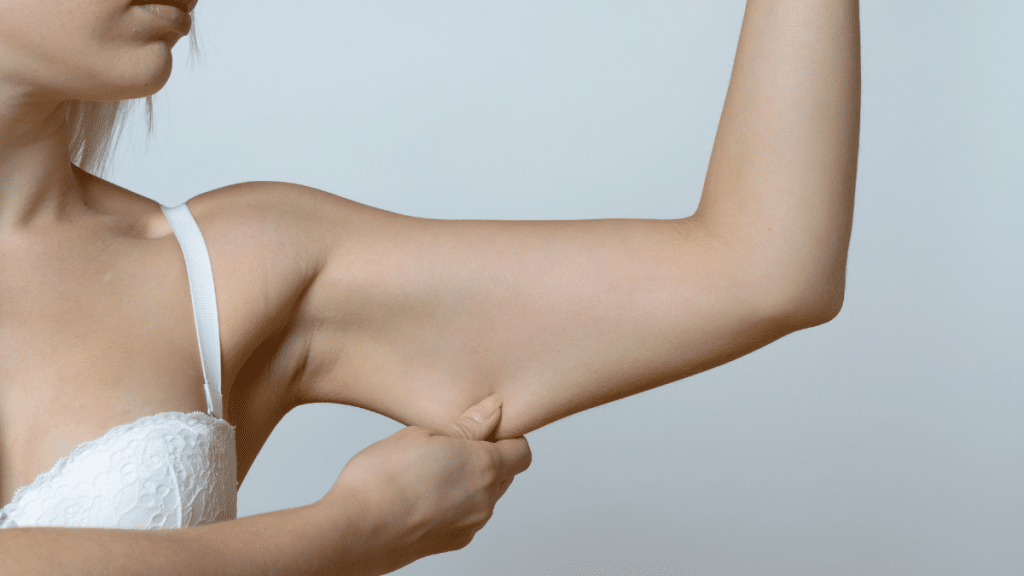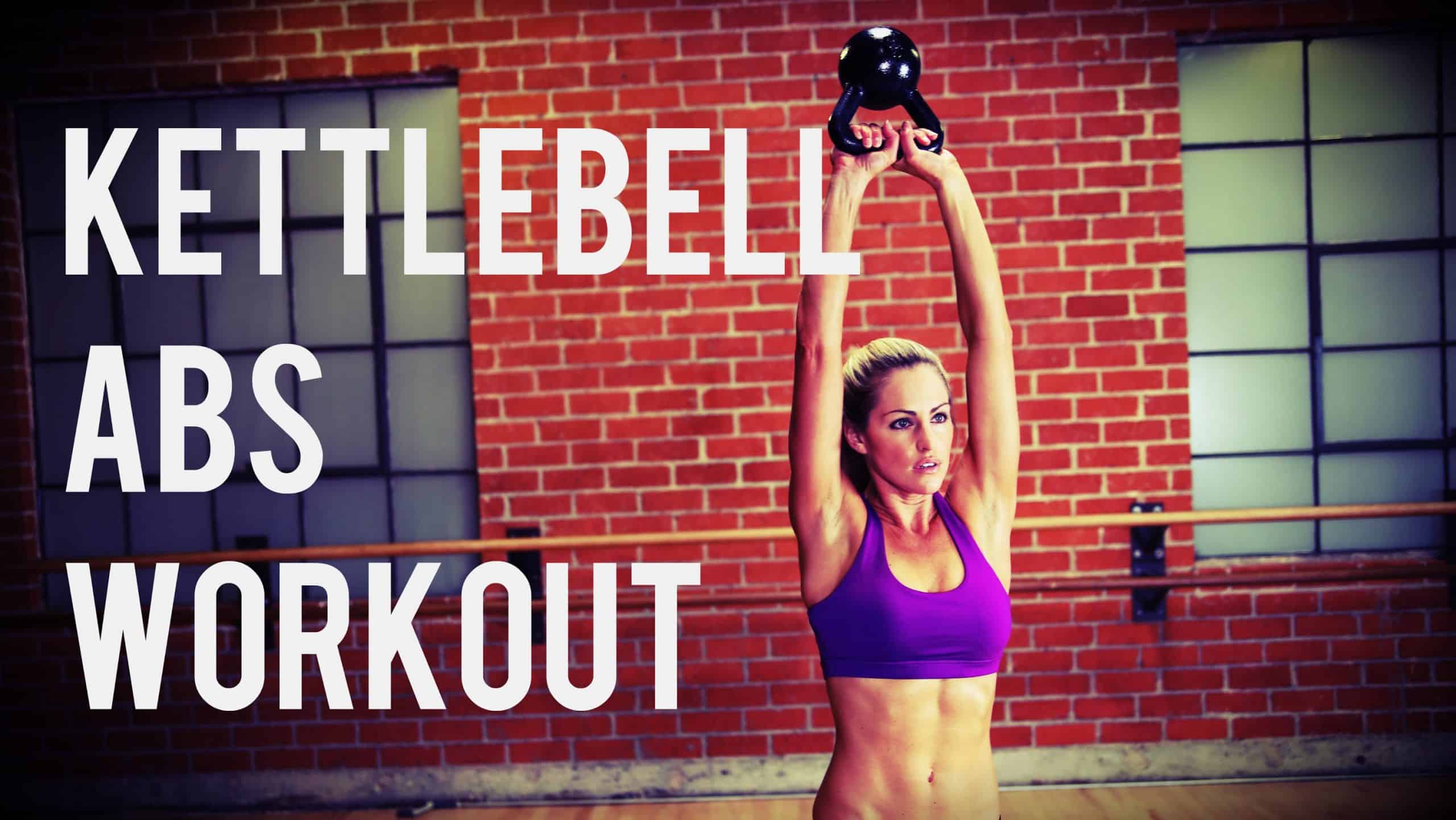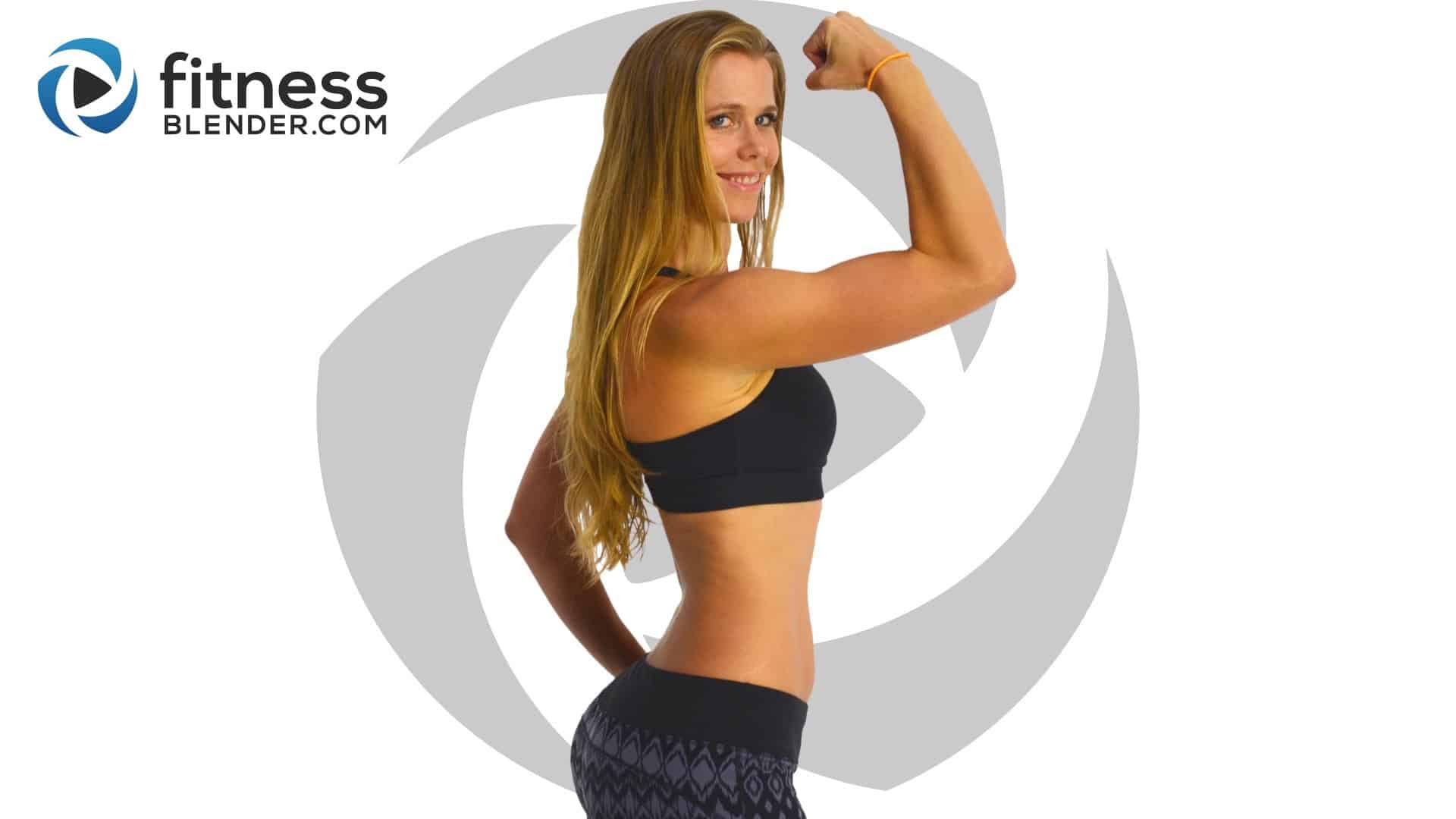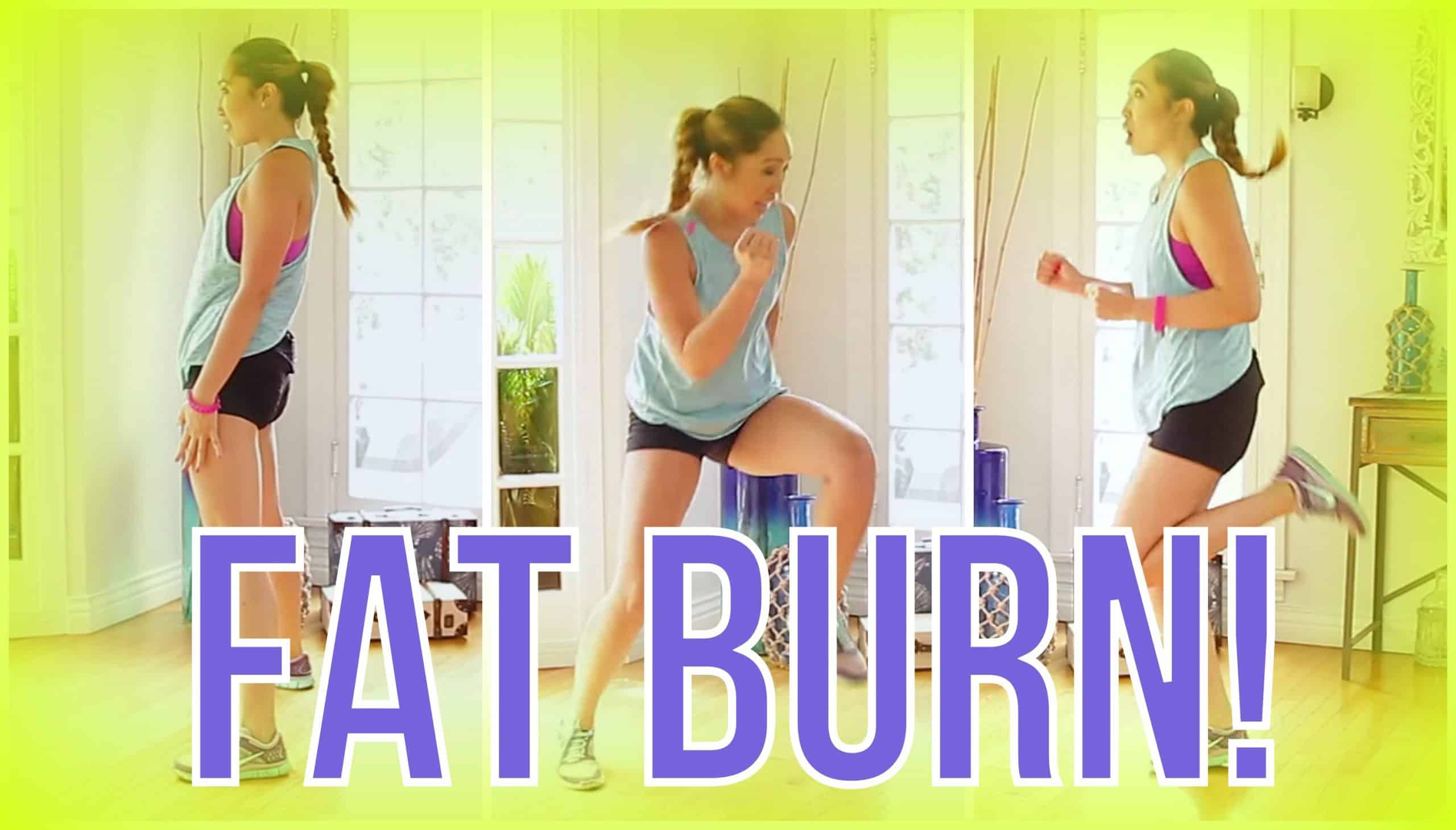Determining whether you have loose skin vs fat on your body is a critical step towards better health. If unnecessary fat starts accumulating while you believe it to be just loose skin, things can go out of hand very quickly.
Having a few extra pounds attached to your belly isn’t uncommon. Obesity of some level affects the majority of the population in the US. However, dealing with it starts with figuring out whether it is loose skin or fat that you are dealing with.
With that in mind, let’s see how do you actually determine what it is.
The pinch test
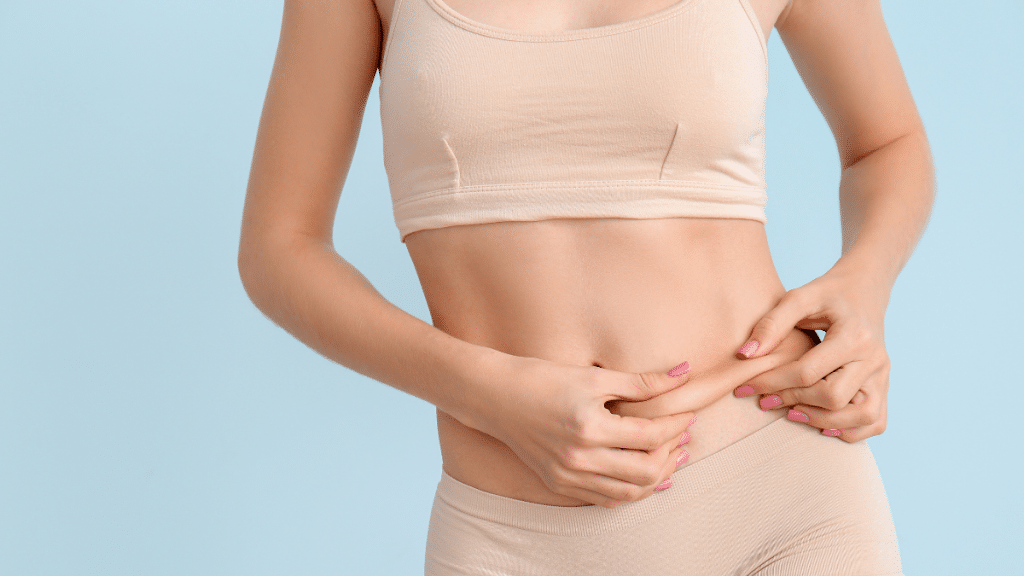
Thankfully, the pinch test is all you need to find out whether it is just loose skin or fat on your belly. And if fat, then how little or how much of it.
First, pinch another area such as the wrist – the least prone to accumulating fat. You can also pinch the back of your hand carefully. Press the pinching fingers together and feel how much closer together they are to each other. In other words, there is very little “stuff” between your pinching fingers, isn’t there? This stuff is essentially all skin, little fat.
Now, do the same on your belly. It’s okay if you grab a larger chunk here as belly skin tends to “roll”.
How much can you pinch? If you can pinch easily, just as you were able to pinch the back of your hand, then you only have loose skin. This, however, is rarely the case except with extremely fit athletes and some other professionals.
Most people, including the skinniest celebrities, will have some “stuff” when they try to pinch their belly.
In this pinch on the midsection, you will find that the fingers are further apart, or that it’s difficult to bring them closer together. All this extra stuff is subcutaneous fat.
This fat lives under the skin. Though your fingers can easily pinch through loose skin, it’s difficult to pinch through this fat.
Don’t get us wrong here. All this fat isn’t unimportant. In fact, a good part of it might be the bare minimum fat your body needs. Fat is essentially a storehouse of energy. Your body will need some of it. But if there is a lot of it as a result of a less active lifestyle, a lot of junk food, or worse, both – then this is a problem which can make you overweight and then obese.
We all know obesity can bring a host of health hazards. Do the pinch test today to determine loose skin vs. fat.
Visceral fat
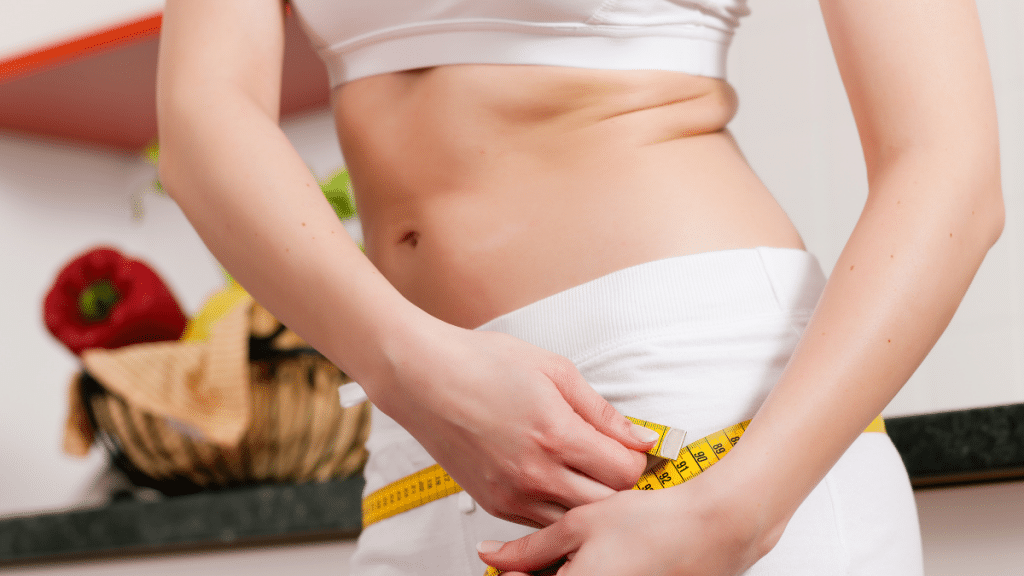
Subcutaneous fat isn’t the only fat you should look out for. The other type of fat, one which you can’t pinch to test, is visceral fat. This is fat that lurks deep within, in the cavities within your stomach.
This fat works like padding between the internal organs. This padding is important, just as subcutaneous fat is important, but having a lot of it is, again, a cause of many problems later on.
In fact, studies have shown that having excessive visceral fat is likely more dangerous for you than having excessive subcutaneous fat. Having a bigger waist area than the hip (also known as the apple body shape) is closely associated with having a lot of visceral fat.
Wrap a measuring tape around your waist (specifically, around your middle just above the hipbones). Ideally, a waist circumference of 35 inches for women and 40 inches for men is the maximum you should have. Measure after exhaling.
Managing loose skin
You might have subcutaneous fat at the center of it, but loose skin is also a pretty common issue among adults. Loose skin is apparent from a single look. Multiple folds, rolls, or wrinkles on your belly indicate the presence of loose skin.
The most common cause of loose skin on your belly is sudden weight loss – including that from pregnancy.
The best way to treat loose skin swiftly is to undergo a body contouring procedure. It’s a type of surgery, more commonly known as loose skin surgery. Discuss this with your doctor to find out how feasible and beneficial it will be for you to undergo such a procedure.
What to do about my excessive fat?
The best way to get rid of both visceral and subcutaneous fat – at least the excessive part of it – is to do regular exercising. The results will not be spontaneous. Combine it with a better, cleaner diet to boost the results.
Lesser fat inside your abdomen also decreases the risk of coronary complications such as heart diseases.
Take frequent body circumference measurements at multiple points of interest, such as the aforementioned waist measurement. Other points include hips, chest, thighs, and calves. Keeping these measurements is a better way to track your progress. If you are gaining width around these core areas then you need to make fundamental lifestyle and diet changes.
Perhaps the quickest way to determine whether or not your fat level is at a healthy point is to calculate your BMI. Though not known for their accuracy, they can give you a good ballpark estimate for your health. Just Google for an online BMI calculator. BMI is a number that comes from the calculation of your height and weight. In a nutshell, it means every cross-section of your body should have a specific average volume to know whether your fat is well divided as per your height or if you are overweight or obese.
Wrapping up
We hope to have helped you in determining loose skin vs. fat. Loose skin poses a significantly lower threat than having a lot of fat. And within fats, visceral or internal fat poses a higher risk than subcutaneous fat, which you can pinch on your belly.
Using nifty tools such as the BMI calculator or measuring your widths can be effective ways to track which way you are going: towards normalcy or being overweight. Making drastic changes are more likely to be relevant in the case you are approaching obesity levels.
